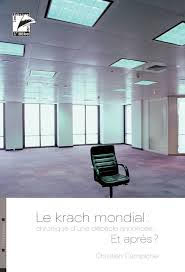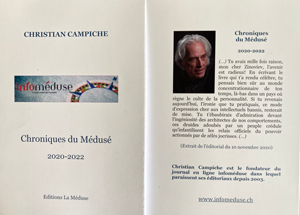Shantytowns lodge 51% of the population of the 128 most important cities in Venezuela. That is, 13 million people, nearly half the country’s population, live in two million ranchos. They are poor and are going to be poorer. In between 1980 and 1994 their salaries lost half their value, while the value of construction materials (65% of the cost of a house), multiplied by 35. If in 1990, 45% of household income was spent in food, nowadays 75% is spent in food. They only have 25% for everything else, for clothing, transportation, education, and, of course, housing. Just as a reference, it is worth noting that within the European Economical Community, between 1950 y 1997, food expenses went down from 50% to 20% of the average family income.
At present, Venezuela has a shortage of a million and a half dwellings, including the one million most precarious ranchos (or shanties), which cannot be qualified as proper housing. Every 20 years, Venezuela’s population doubles. This means that if the goal proposed by the Ministerio de Infraestructura, of constructing a hundred thousand dwellings per year – which is not necessarily possible- the shortage would be covered in fifteen years, but for another 3 million dwellings needed to house the 18 million population increase which is to be expected from present population grow figures, and has to be added to the present shortage. Is there a way out different to building more ranchos? What other alternative could surpass the constructive efficiency of the rancho?
At present, State has raised such a fact within the new law that regulates housing policies. However, many within government itself are against it. For them, the barrio is not only a problem, it is a problem which has to be eradicated. In such a way, some believe any investment in barrios will only contribute to perpetuate urban anarchy, it would propitiate construction against regulations, with no respect to the constructive and spatial norms, which should regulate urban grow. Let figures be the answer. Real world makes any discussion to be superfluous, numbers tell you different on such ideas.
But we do have to consider the qualitative aspect of it. Such views dismiss what is essential, the barrio is not simply a bunch of edifications, but rather a complex habitat, where lie all kind of power, interests, relationships and exchange. It is the wealth of a social body full of life and in the process of continuous transformation. Precisely because it is an organization, which comes forth spontaneously from community life, it has a capacity to answer social needs, which cannot be surpassed by pacified urban settings conceived to dwell communities, which do not exist as such.
May all this be of use to introduce the basic idea, behind the New Programme for Barrios Habilitation, to conceive the Barrio as a solution, rather than as a problem. The lasting of the Barrio is not only a fact -which cannot be avoided- it is also essential. In fact, barrios erect as the patrimony of half the country’s population. It represents the effort of millions of people who, with low income, with little help from state, build a very important share of the venezuelan city. To invest in the barrios is to give to the community the resources that belong to them. To overcome the many deficiencies that barrios do have, and to functionally articulate them to city life, is to solve the urban and social problems of our society. The barrios hold our identity as a nation, as well as our culture. The communitary, collective, character behind the building and growth of the barrio, is a sine qua non requirement for the making of the city. It is the foundation for organization and participation, and thus to build and sustain citizenship.
Sociologist of any urban settlement, -from small villages to big cities-, tell us these are born and consolidate naturally, raise from the “rationality of settling”, from work and common interest, from economical and social relationships. The traditional “dwellist” policy, which still prevails upon the more conservative sectors of government, favors the construction of dwellings rather than city habilitation, it places dwelling against barrio, city planning against urbanity, individual against collective. When the main problem, even on quantitative terms, lies within the city itself and not on its grow.
To say it in a different way, in touch with modern times, considering the experience of new technologies: is there a better example to prove what we say than Internet? …. The virtual space exists as long as it is shared by a collectivity of individuals who use it. It is use, which justifies its existence.
It makes no sense to go on thinking it is possible to place physical fact before social fact, location before community, projects before ways of life, which are webs made out of relationships and bonds, choices, encounters, tolerance, living together, conflicts… it is unbelievable that some people in Venezuela would still place simple edifications, or dwelling prototypes, built in series, before the barrio and its community, that is to say before the barrio’s whole way of life.
We must single out some of many examples given by nature, and among them the one which brings us together today, which occurred along the central Venezuelan coast, where a year after the tragedy, beyond the strength of a river seeking its natural path, arouses the natural strength of a community which is seeking its own path.
We are a group of architects, elected through a competitive contest of proposals, responsible of the Programme of Habilitation of Barrios within the “Litoral Central”. Just before the explanation of a specific case, the Ojo de Agua barrio, which architect Marisabel Espinoza is going to give us, to illustrate what is involved in this programme, I would like to mention a last statement out of my own experience:
In the knowledge of what the “Programa de Habilitación de Barrios’ proposes, my own professional experience tells me it is necessary to go further. When I assume physical aspects should not be placed before social aspects, I understand that the success of any habilitation program is, to my understanding, to pay due attention, as much as to equipment needs, and from the beginning, to the other essential aspects such as employment, culture and community management of its own space, resources and future … because beyond concrete, that is what makes a place exist.
(1) Architecte, Caracas, Vénézuéla









